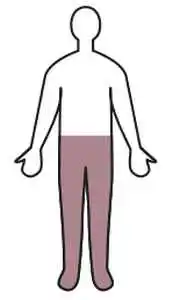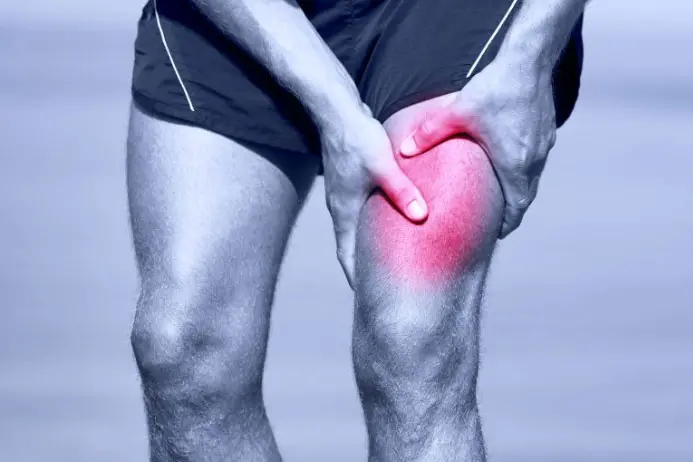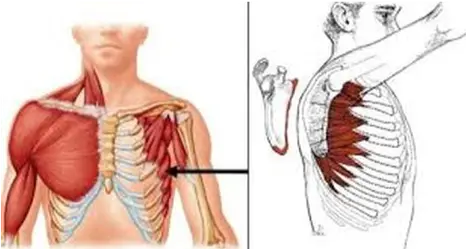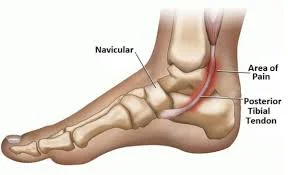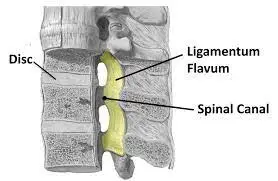Diplegia
Diplegia is a type of symmetrical paralysis that generally affects one or both arms and legs. It is the leading cause of paralysis in children, but it may affect persons of all ages. Diplegia is a highly variable form of paralysis that can improve, worsen, or change over time.
What is Diplegia?
- Diplegia is a disorder that causes weakness or paralysis on both sides of the body, primarily in the legs. It can affect persons of any age, although it is most prevalent in children.
- Diplegia is a symptom, not a condition in and of itself. Any symmetrical area of the body, including both arms, both legs, and both sides of the face, may be affected. The intensity varies significantly and may differ across sides.
- For instance, a person suffering from diplegia may be completely paralyzed in one leg while still having some movement in the other. Unlike other types of paralysis, diplegia changes over time and does not always result in a complete loss of function. Instead, persons with diplegia have major neural system abnormalities but may still be able to function and feel.
Types Of Diplegia
There are two primary types of diplegia:
- Spastic diplegia: This is the most frequent kind of diplegia, and it is caused by brain injury that occurs before birth. People with spastic diplegia have rigid muscles that make it difficult to move their legs, arms, and occasionally even their faces.
- Flaccid diplegia: which is less prevalent, is caused by nerve or spinal cord injury. People with flaccid diplegia have weak muscles, making it difficult to move their legs, arms, and, in rare cases, faces.
What are the Causes of Diplegia?
It is impossible to identify diplegia based purely on symptoms, but knowing where the diplegia is and when it started might help your doctor rule out the most prevalent causes. Some frequent causes of diplegia are:
- Vascular conditions that reduce blood flow to the region. Diplegia of the face occurs often during and after a stroke.
- A stroke is the obstruction or rupture of a blood artery in the brain. It can harm the region of the brain that governs movement, resulting in diplegia.
- Infectious and poisonous substances can harm nerves or muscles in the afflicted region. This can result in facial diplegia and, less often, impact other parts of the body. Diplegia induced by viral or toxic substances can be reversible if treated early.
- Spinal cord and brain damage. These injuries do not impact the paralyzed area. Instead, they prevent the brain and spinal cord from sending and receiving impulses to the afflicted region. Diplegia resulting from brain and spinal cord damage is typically permanent.
- Cerebral palsy. This is the leading cause of diplegia in children, as well as other types of paralysis. Spastic diplegia, a similar disorder, can be characterized by restricted mobility and uncontrolled, unpredictable motions.
- Tumor: A tumor in the brain or spinal cord can harm the nerves that regulate movement, causing diplegia.
What are the Symptoms of Diplegia?
The most noticeable indication of diplegia is a lack of restricted movement in symmetrical parts of the body. Other symptoms may include:
- Weakness or paralysis on both sides of the body, typically more pronounced in the legs.
- Muscle stiffness
- Having difficulty walking, standing, or balancing
- Trouble synchronizing motions
- Speech issues.
- Seizures
- Changes in neurological functioning.
- Spasticity is the term used to describe uncontrolled muscular movements.
- Difficulty regulating your bladder or bowels.
- Phantom pain.
- Chronic pain.
- Unable to feel the afflicted area.
- Asymmetry in movements; for instance, a person suffering from facial diplegia might only be able to raise one eyebrow or have a gravely lopsided smile.
- Diplegia symptoms can range from moderate to severe, and they might fluctuate substantially over time.
The Risk Factors for Diplegia
The children in the study group had low birth weight (31.7%), untreated maternal anemia (60.7%), hemiplegic form (60.7%), age of mother over 30 (31%), and dyskinetic form (age of mother over 30) as the most significant risk factors for the development of spastic diplegia of cerebral palsy.
Diagnosis for Diaplegia
It can take several steps to diagnose diplegia, including a thorough medical history, a physical examination, and perhaps imaging testing.
Medical History: Your physician will begin by enquiring about the nature and timing of your symptoms as well as any associated conditions. Your medical history, including any previous infections, operations, or injuries, will also be questioned. Relevant factors may also include a family history of neurological conditions.
Physical Examination: Your doctor will examine the strength, tone, and coordination of your muscles on both sides of your body.
In addition, they might examine your balance, reflexes, and gait (pattern of walking).
The underlying reason for any abnormal movements or postures can be recognized by observing them.
Imaging Tests: Although not always required, imaging tests such as CT or MRI scans can aid in visualizing the brain and spinal cord to detect anatomical abnormalities that may be the cause of diplegia.
To evaluate nerve function, further tests such as nerve conduction studies or electromyography (EMG) may be utilized in specific situations.
Differential Diagnosis
- Your doctor must rule out other possible explanations with similar presentations because diplegia can be a sign of many different illnesses.
- Depending on the suspected underlying illness, this might involve further testing or meetings with specialists.
Early intervention and management of diplegia and related problems depend on an early and precise diagnosis. Depending on your situation and the symptoms that are presenting, the precise diagnostic strategy may change.
For an accurate diagnosis and suitable treatment plan, speaking with a medical professional with experience in neurological diseases is essential.
Treatment for Diplegia
Diplegia treatment is determined by the underlying cause, hence a definitive diagnosis is required. Blood tests, imaging scans, genetic testing, and other tests may be conducted by your doctor to ascertain the cause of your diplegia, particularly if the symptoms did not develop after an accident. Treatment options for diplegia vary depending on the reason.
These therapies might include:
- Physical therapy can assist increase muscle strength, flexibility, and coordination.
- Occupational therapy can assist persons with diplegia learn to do ordinary tasks more readily.
- Speech therapy can assist persons with diplegia to enhance their communication abilities.
- Medications: Medications can help with muscular stiffness and other symptoms.
- Surgery: In certain circumstances, surgery may be required to treat muscular contractures or other issues.
Physical Therapy Treatment for Diplegia
Physiotherapy treatment can improve.
- Coordination and Balance
- Strength Flexibility
- Endurance
- Pain management
- Posture Gait
- Overall health
Physiotherapy treatment is planned according to the ages
From birth to one year
patients experience several milestones. Examples include head control, reaching for a toy, sitting, beginning to vocalize noises, and finger feeding. Most families want to be patient right once, but because of the upper and lower ranges of development in early-born newborns, it is tough to identify diplegia. The most prevalent manifestation of diplegia in children is stiff lower extremities. At this age, the patient does not move their legs actively.
Up to 3 years
Diplegia symptoms are more visible at this age. At this age, the patient with diplegia is usually unable to walk. At this age, the kid must participate in physical treatment and gain social skills. At this age, the family should not force the patient to sit, crawl, or walk. Allow the patient to be comfortable while the therapist corrects the problem. If the therapist wants to assist the patient in walking more effectively, walking aids may be used.
Up to 6 years
Patients with diplegia see remarkable improvement in motor function. During this period, the patient experiences significant gains in motor function. The patient is then placed in a regular school with an emphasis on cognitive concerns rather than treatment. A patient uses walking assistance to go about.
Up to 12 years
Up to 12 years, physical progress in balance and coordination has plateaued. It’s recommended to shift the child’s focus to intellectual learning rather than physical improvement. During this time, a kid should avoid physical therapy and instead engage in outdoor or social activities such as sports and adaptive exercises.
A child’s walking skills are usually at their peak around the age of 8 to 10. This normally decreases slightly when a child reaches puberty and develops height and weight since walking becomes more difficult during this transition time. Any substantial walking issues should be addressed with surgery at this point.
Between the ages of 18 and 24
Parents should learn how to deal with their children’s maturation and provide them with more freedom and independence. Teenagers should make their own decisions and learn from them. One method to do this is for parents to compromise and let their children make tiny decisions, making them feel important. Parents should also be aware that their child’s walking ability may regress as their height and weight rise. Returning to treatment during puberty is advised so that the teenager can adjust to the increase in height and weight without regressing too much.
What’s the prognosis for Diplegia?
Diplegia is one of the most unexpected types of paralysis, and even severe instances can recover over time. In the end, the source of the diplegia and the quality of care determine the outcome. Even in the most severe instances, prompt medical intervention combined with rehabilitative treatment provides the highest chance of complete recovery.
In children with diplegia, symptoms frequently vary substantially during puberty. Other variables, including overall health and previous injuries, might also influence the progression of diplegia.
Your doctor is the finest source of information on how your diplegia will evolve, but because diplegia is so unpredictable, even the best doctors cannot anticipate all outcomes.
Summary
Diplegia mostly affects the legs and arms and seldom causes cognitive issues. Most persons with diplegia can live independently. Individuals with diplegia have a good chance of recovery if they are diagnosed and treated early enough.
FAQs
What is Diaplegia?
Diplegia is a disorder characterized by paralysis of the equivalent regions on both sides of the body. This implies that if you have diplegia, you can have trouble utilizing your legs, arms, or both. The degree of diplegia varies from person to person, with some experiencing just slight weakness and others being unable to move at all.
What causes Diplegia?
The most prevalent cause of diplegia in the legs is cerebral palsy. Trauma, injury, or heredity can all induce leg paralysis, although it is extremely rare.
What are the symptoms of diplegia?
Changes in neurological functioning.
Spasticity is the term used to describe uncontrolled muscular movements.
Difficulty regulating your bladder or bowels.
Phantom pain.
Chronic pain.
Unable to feel the afflicted area.
Is diplegia considered a disability?
Diplegic cerebral palsy, also known as spastic diplegia, is a type of impairment characterized by recurrent spasms and muscular tension.
How many individuals have diplegia?
The most prevalent condition in clinical practice is bilateral spastic CP (diplegia and tetraplegia). The frequency is 1.2 per 1000 live births, although it can be as high as 40 to 50 per 1000 for low birthweight newborns.
What’s the difference between hemiplegia and diplegia?
Diplegia: Affects two limbs, usually the legs. Hemiplegia affects one side of the body, with the arm being the most affected. Triplegia affects three limbs. Quadriplegia affects all four limbs, with the legs being the most affected.
References
- SpinalCord.com. (2020a, November 12). Diplegia | SpinalCord.com. Spinal Cord, Inc. https://www.spinalcord.com/diplegia
- Cerebra Palsy Guidance. (2024, February 7). Spastic Diplegia Cerebral Palsy | Symptoms, causes, treatment. Cerebral Palsy Guidance. https://www.cerebralpalsyguidance.com/cerebral-palsy/types/spastic-diplegia/
- Horne, B. (2023, May 26). Understanding spastic diplegia cerebral palsy. https://www.medicalnewstoday.com/articles/spastic-diplegia-cerebral-palsy
- Patel, D. (2023, December 13). Diplegia – cause, symptoms, treatment, exercise. Mobile Physiotherapy Clinic. https://mobilephysiotherapyclinic.in/diplegia/

